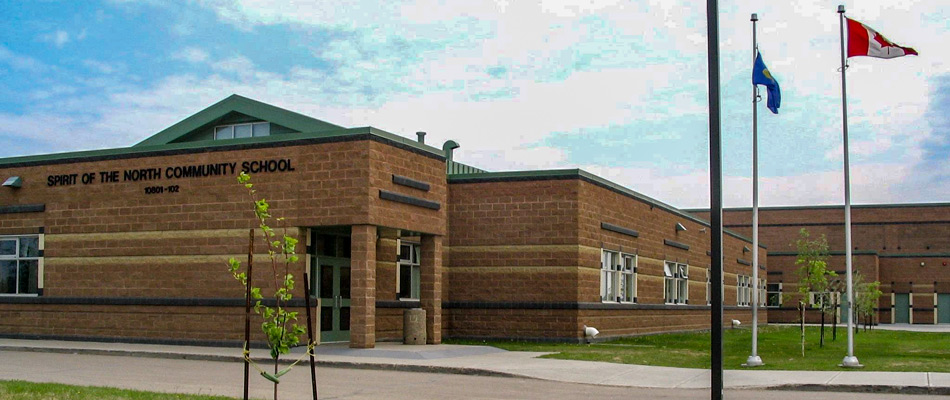Scheduling the operations of equipment is a major step in the ongoing optimization of a facility’s energy consumption. The benefits of an optimal schedule are even more profound when there are errors in the scheduling.
 A middle school in northwestern Alberta is expected to save $40,000 a year after a scheduling error was identified and resolved. With only adjustments to the building automation system, the costs to find and fix the problem were paid off in a few months from electricity and fuel savings.
A middle school in northwestern Alberta is expected to save $40,000 a year after a scheduling error was identified and resolved. With only adjustments to the building automation system, the costs to find and fix the problem were paid off in a few months from electricity and fuel savings.
Spirit of the North Community School has around 40 staff and 250 students from Grade 4 to Grade 6. The school is located in the northwestern corner of Alberta in the town of High Level.
The first clues to an issue was a large utility bill from the facility given its size. Rede visited the site and identified a 60-kW load at the electrical panel after occupancy – a significant load considering the facility was empty.
This large electrical consumption was attributed to three ventilation systems – totaling 50 HP in fan power – operating constantly. Rede analyzed the building automation code and found that a one-line programming error caused the schedule to not be followed.
After the scheduling was enabled in October 2017, the electricity consumption was reduced by 37% and natural gas consumption by 16% compared to the previous year. Spirit of the North Community School saved $41,500 in utility costs over the first year.
The situation was exasperated by unnecessary ventilation of air during cold months, where additional fan power and natural gas was required to heat up cold air. The simple change to the facility’s schedule contributed to more energy savings.
Spirit of the North Community School experiences a significant temperature range throughout the year. With a subarctic climate, High Level experiences a significant range of temperatures throughout the year. Winters tend to bring significant periods of cold weather, and cold air tends to collect in the region due to its relatively low altitude. Summers are warm, with the average temperature rising to above 20˚C. Every building can benefit from a thoughtful and custom schedule, but the benefits are more defined for facilities in climates with wide temperature ranges.
Given the work involved and the magnitude of savings, the investment was recovered in a few months and “banked savings” are earmarked for future improvements. Collecting and analyzing data from building automation systems is a cost-effective and streamlined approach to ongoing optimization and opening up funds for future projects.
| Pre-Implementation Annual Consumption | Actual Annual Savings | Target Annual Savings (%) | |
|---|---|---|---|
| Electricity (kWh) | 546,000 | 215,000 | 37% |
| Fuel (GJ) | 6,500 | 1,300 | 16% |
| Electricity Energy ($) | $59,810 | $34,000 | 37% |
| Fuel Energy ($) | $58,591 | $7,500 | 16% |
Project Cost = $10,500
Estimated Annual Cost Savings = $41,500
Target Payback = 0.25 years
